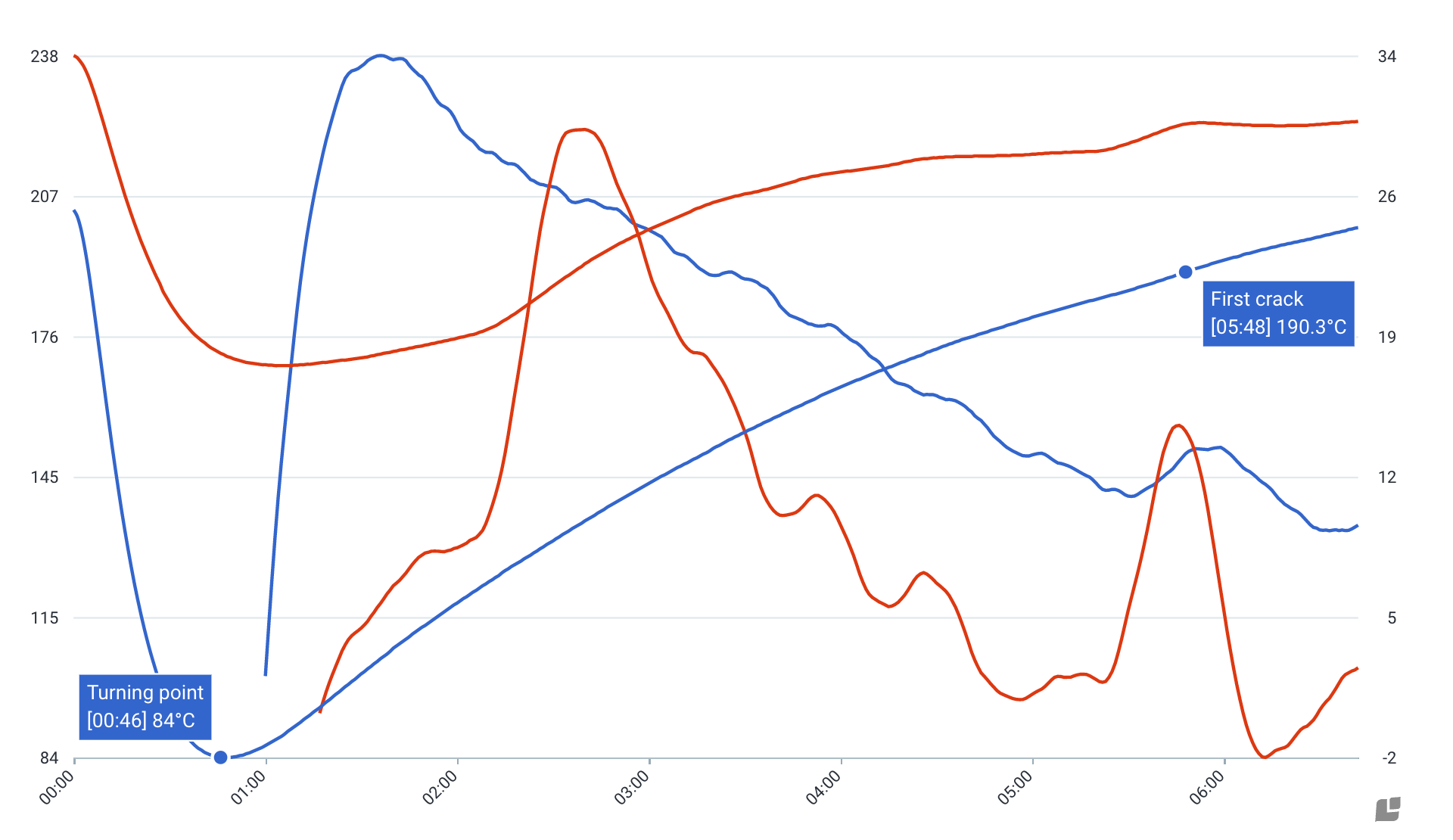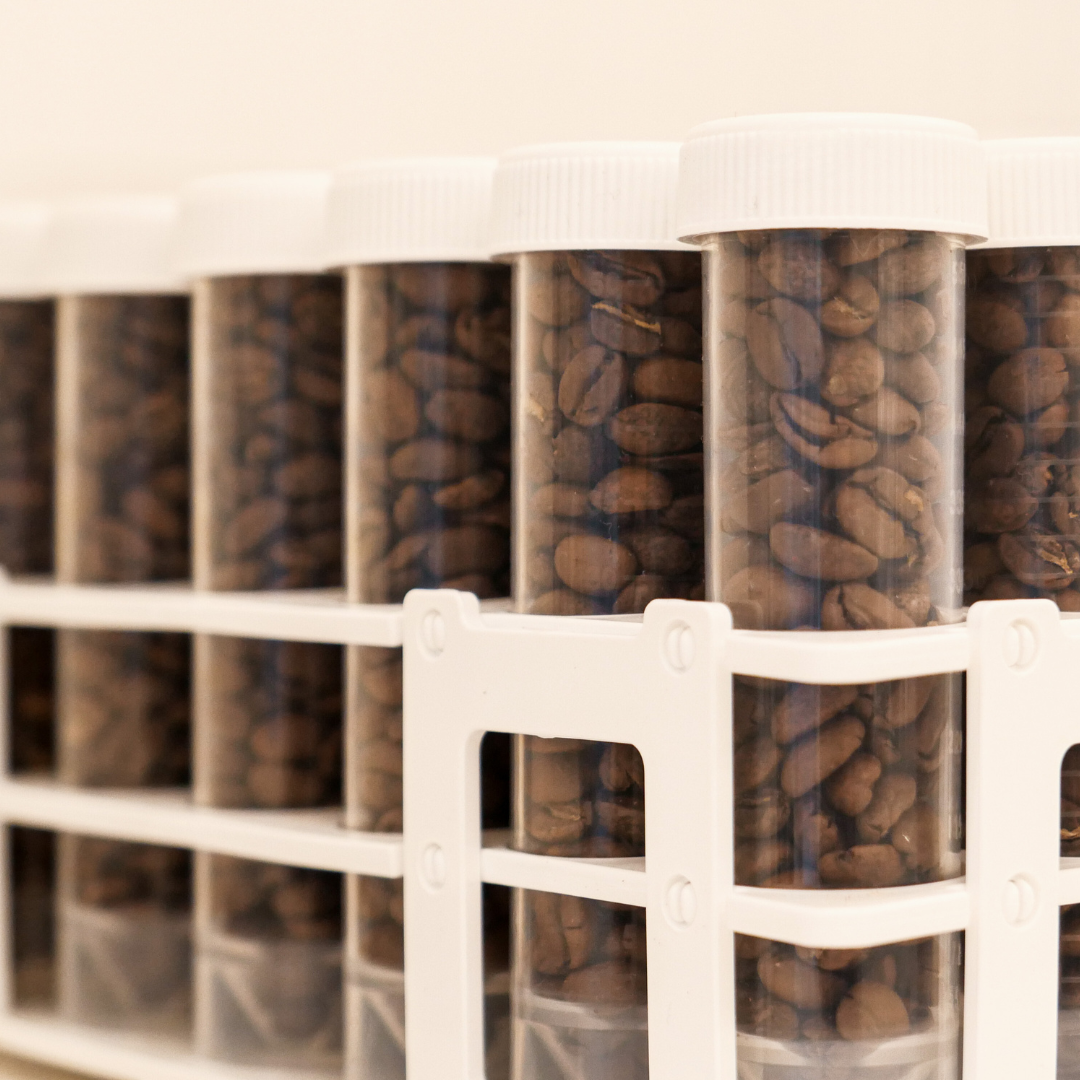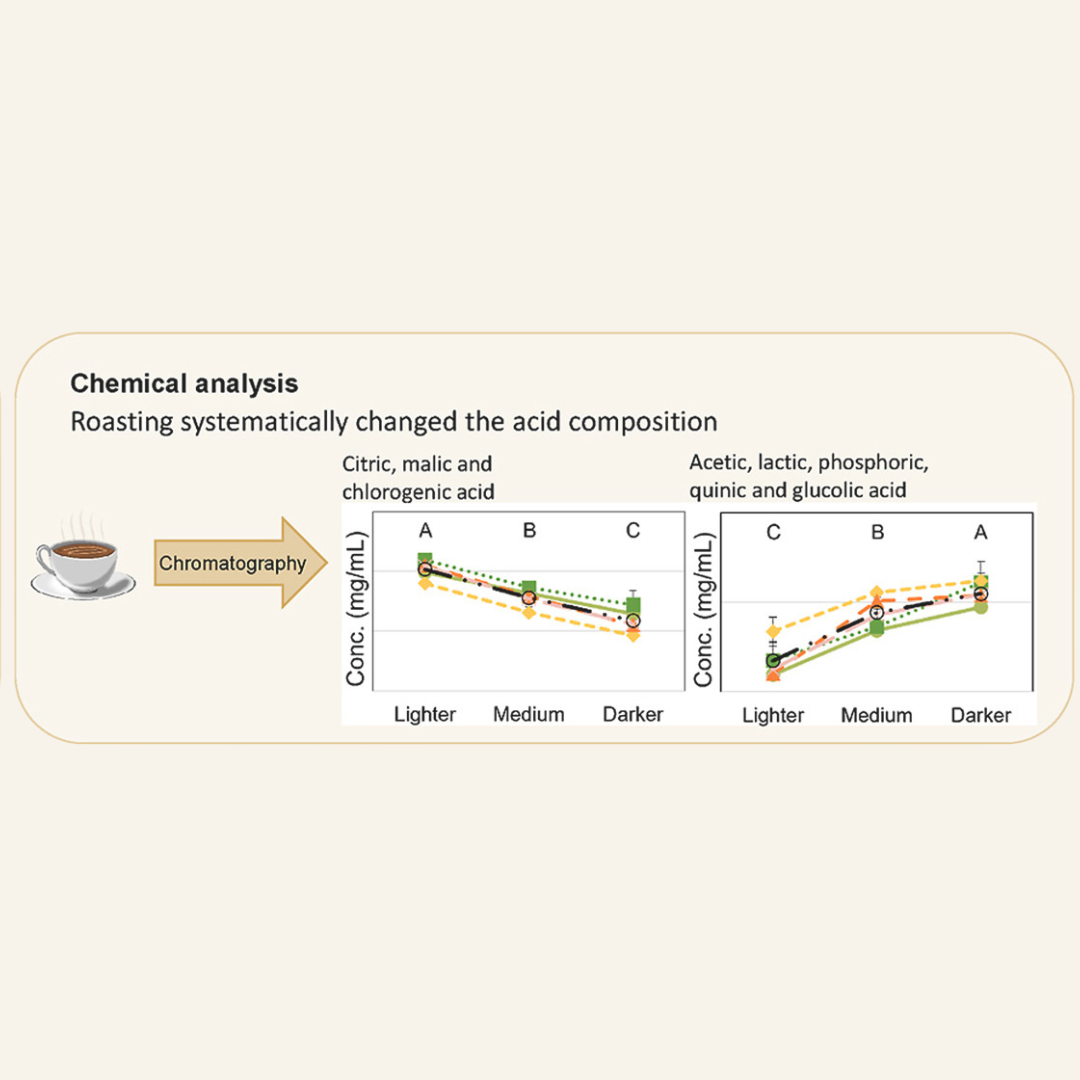The main idea behind Normcore Style Super Light Roasting is to highlight the unique flavour profile of the coffee; it's similar to the concept of "terroir" in the wine industry. By minimising flavours caused by roasting, we could maximise the original flavour of the coffee.
How is coffee made?
As you may know, coffee is from a coffee tree. It is made as a coffee cherry, and people pick it up and do a few processing steps to get a green coffee bean (seed). And what we drink is made from the roasted coffee bean, entirely different from its original form. This means roasting affects a lot to let us experience the flavour of the coffee.
What's important at this stage is that not only does roasting turn the green bean into a roasted bean, but it also creates different flavour profiles.
How does roasting impact the flavour of the coffee?
During roasting, coffee goes through 3 major stages: heap absorption, maillard reaction period, and development. No matter the light or dark roast, every coffee has come all day through these stages(and the development stage determines the degree of coffee roasting).
The two most important factors in roasting coffee beans are time and temperature. These factors are crucial for bringing out the flavours of the coffee, and each roaster has its unique approach based on its knowledge and experience.
It's commonly known that higher roasting temperatures result in more roasty notes. This is because, during the development stage, flavour molecules are created and then evaporated from the enzymatic category, which imparts floral and fruity notes. The process then continues to the sugar browning category, which brings out chocolaty, caramel, and vanilla-like flavours. Finally, the process reaches the dry distillation phase, which produces bitter and heavy tastes. While the enzymatic category represents the natural flavour of the coffee, the other two steps create the original flavour and the roast notes.
Why is delivering the authentic flavour of the coffee critical?
We don't believe there is a right or wrong way to roast coffee - it's all about delivering the flavour profile that our customers enjoy. When we roast single-origin coffees, we try to keep our intervention to a minimum. This is because we want to showcase the natural flavour of the coffee.
For our signature blends, we offer light, medium, and dark roast profiles that showcase the flavour that we want to deliver. However, for our single-origin coffees, we only provide a light roast profile because our customers love experiencing the unique flavour of each origin. We can't claim that our roasting method is the best, but we can confidently say that our profile highlights the authentic flavour of each coffee.
How do we develop the flavour of the coffee?
It's important to roast coffee beans not just lightly but also properly to ensure quality. Through numerous experiments, we've learned that applying heat in the right way helps develop the inside of the bean and ensures quality. As a result, our single origins have a lovely, silky texture and a balanced taste, even though they are lightly roasted.

Now, it's time to enjoy!
We have a list of various single-origin coffees available, as we understand that everyone has different tastes and preferences. Our coffees are lightly roasted, so you can enjoy their authentic flavour regardless of your origin. Don't worry; we have something for everyone to experience.
Please enjoy our damn good coffee!



